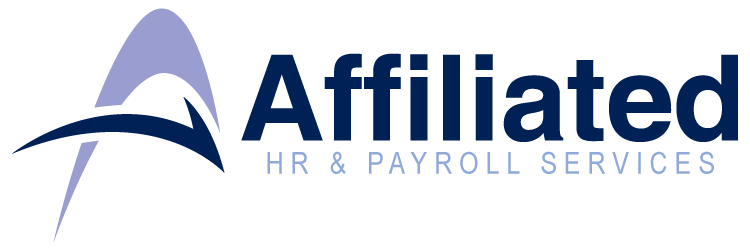
by Stephanie Baxmann | Jul 15, 2024 | HR Administration, Payroll
Siloed systems are relics of the early 2000s; today, integrated HR and payroll systems are the wave of a more efficient future. HR and payroll integration means a more robust onboarding process, fewer errors, greater transparency, and enhanced compliance, among other benefits.
As payroll and HR systems grow increasingly complex, integrating the two systems only makes sense from efficiency and security standpoints. It’s only a bonus that this integration also eliminates many cumbersome manual processes.
Here’s why more organizations are integrating their payroll and HR systems, as well as the best practices for doing so.
How Integrated HR and Payroll Systems Work
There are three principal types of integrated HR and payroll systems:
HRIS (Human Resource Information Systems) are designed to handle basic HR needs such as benefits administration, storage of employee data, employee leave management, and payroll processing. Employee information is stored in individual digital files, which allows time, attendance, and benefits records to flow seamlessly to payroll records. This ensures more accurate payroll records, as it automates calculations and tallies paid and unpaid leave. This makes HRIS ideal for small businesses that do not have a dedicated HR department.
HRMS (Human Resource Management Systems) can work with both small and mid-size businesses, as they offer more features than an HRIS. They are centralized systems for HR, payroll, and employee data. In addition to core HR functions, HRMS can also support performance management tools, learning and development, employee onboarding, and other advanced functions to synchronize data across different aspects of employee productivity.
HCM (Human Capital Management) systems are used by large enterprises, as they are the most comprehensive type of integrated HR and payroll system. They encompass both the core and advanced functions of HRMS, but are also scaled for workforce management and optimization of very large staffs. Succession planning, business intelligence, and other advanced aspects of people management are the main draws of using a HCM over the two types of systems.
Benefits of HR and Payroll Integration
There are innumerable benefits to HR and payroll integration. No matter which type of system your organization picks, unifying the two functions streamlines processes. Here are some of the benefits in doing so:
Fewer Errors
Manual data entry creates errors, and legacy payroll and HR systems that are siloed are very prone to errors. Because integrated systems integrate employee data in real-time, such as attendance rates, benefits deductions, and other information related to compensation and performance, these inaccuracies are vastly reduced because they no longer require human input to process.
Increased Productivity
Integrated HR and payroll systems are major time savers. By eliminating tedious, time-consuming tasks related to manual data entry and checking between two siloed systems, HR staff can focus on more pressing and meaningful matters, like creating a better workplace culture.
Data-Driven Decision-Making
When payroll and HR data are viewed in tandem, they provide a more holistic view of the entire workforce. This enables managers to make better decisions regarding staffing needs and overall business strategy when they can see productivity, retention rates, and other data points in real time.
Increased Employee Morale
Self-service options with integrated payroll systems make employees feel more empowered about their personal finances. When employees feel more in control regarding things like leave requests, changing their payroll information, and finding out more about their benefits without needing to constantly contact an HR manager, it saves teams time and empowers them.
Enhanced Compliance
Payroll and HR regulations are constantly becoming more complex. Having a holistic view of both data sets at all times makes it easier to see if compliance requirements regarding wage and hour regulations, conditions for grant funding and tax credits, and other mandated and optional constraints are met.
Scalability
Integrated systems allow organizations to add or subtract features as needed. As many businesses face uncertain economic times and look to scale back, integrated systems allow them to do so. When growth is evident, the features can be added back. These enable teams to stay agile while retaining core functionality with greater transparency than when the systems were siloed.
Data Security
The cloud-based systems behind integrated payroll and HR systems have more built-in security features than legacy systems. Payroll data security is more important than ever when data breaches are a constant threat to employees and customers, as the sensitive data in payroll records is highly desirable to bad actors. Cloud systems must be compliant with privacy regulations, and they can provide a record of attempts at unauthorized access before unwanted cyber visitors become a serious problem.
The Challenges of Siloed Payroll and HR Systems
What happens when HR and payroll functions are not integrated? After all, these two functions have had to be separate for a long time, and organizations have still thrived.
Data discrepancies across the two systems are a given. Without integration, the consequences of these errors waste time and resources that could be put to better use. Integration eliminates time-consuming manual processes that waste employees’ time, such as checking whether the employee has already used allotted leave time.
Best Practices for Integrating HR and Payroll Systems
When evaluating an integrated HR and payroll system, consider the features your organization needs the most versus ones that would be nice to have. Implementing the system will have some growing pains, so make sure to do this during a slow period when operations can handle being temporarily disrupted. Working with a partner like Affiliated HR & Payroll can also provide the guidance necessary for selecting the right system that best fits your organization’s needs and priorities.
Streamline your HR and payroll processes with Affiliated HR & Payroll’s integrated systems. Contact us today for a demo and see how we can help your business thrive.

by Stephanie Baxmann | Jul 2, 2024 | HR Administration, Payroll, Texas, Uncategorized
Businesses nationwide are turning to the independent workforce to weather uncertain economic times and waves of layoffs. Small businesses frequently rely on freelancers and gig workers when they need extra help for a project or busy time of year.
However, just because a worker is temporary or agrees to be paid as an independent contractor doesn’t make them one under federal and Texas laws. Here’s what you need to know about Texas employment law regarding worker classification and how worker classification is defined in Texas.
How Does Texas Employment Law Define an Independent Contractor?
In Texas, the distinction between an employee and an independent contractor is based on the 20-factor test used by the IRS to determine if the work is independent or dependent on personal services. Worker classification is done on a case-by-case basis, with not all factors given equal weight or consideration. These are the factors Texas labor law examines:
Instructions
Employees are given specific instructions on when, where, and how to work. Independent contractors can receive some guidance and examples, but they have the freedom to choose how, when, and where they want to do the job.
Training
Not all workplaces offer training, but employees are typically trained by an owner, manager, or more senior employee. There may also be required training sessions or coursework. Independent contractors have their own licensing, education, and credentials and generally don’t receive training beyond onboarding new programs.
Integration and Reliance
Organizations rely on their employees for successful operations. Independent contractors are usually brought in on a project basis or work separately from the client’s overall operations.
Services Rendered Personally
Independent contractors are able to farm out their gigs to other subcontractors or individuals. Even senior employees cannot delegate work they must personally perform to another employee.
Supervision and Help
Employees in management capacities may take on additional help, such as seasonal and temporary employees, interns, and new hires, but the employer pays these helpers. Independent contractors who need additional help are responsible for their results and for paying for their time.
Continuous Relationship
Permanent employees are expected to remain with the same employer for some time. Independent contractors usually work on a project basis or have a defined start and end date. While they may work with regular recurring clients, the relationship is never assumed to be in perpetuity like an employee-employer relationship.
Set Work Hours
Employees work at their employer’s discretion. They are told which days and hours they must work. Independent contractors have complete autonomy over the timeframes in which they work, deadlines notwithstanding.
Reliance on the Employer or Client
Employees are generally devoted to one employer, with the employer having the right to prioritize the employee’s time. Independent contractors virtually never devote themselves exclusively to one firm.
Location
Employers can dictate if employees can work at home or must report to the office or other job sites. While this depends on the nature of the work, independent contractors can work wherever they want. They also generally supply their own fixed base, such as a home or rented office, while employees rely on their employer to set this for them.
Sequential Order
Employees must perform tasks according to the employer’s instructions, demonstrating the employer’s control over them. Independent contractors focus solely on the results and submit them to the client on time. They decide on orders or sequences for how they work.
Reporting Requirements
Employees may be required to submit oral or written reports to their employers regarding their workloads, projects, and organizational objectives. Independent contractors may voluntarily provide these reports for large projects, but they are usually not mandated to submit such reports.
Payment
Employees are typically compensated at specific intervals, such as weekly payment for hourly wages or biweekly for a salary. Independent contractors are remunerated based on an agreed-upon project rate and invoice for their hourly work.
Business and Travel Expenses
Employee business and travel expenses are usually covered by the employer through company funds and credit cards or reimbursement of personal funds. Independent contractors generally pay for all of these expenses out of pocket.
Tools and Equipment
Employees are typically provided with the tools and equipment needed to do their jobs. While it isn’t out of the ordinary for employees to have their own hand tools, they usually are not buying large pieces of equipment.
Independent contractors, however, pay for their own tools and invest more significantly in their equipment than laptops and basic hand tools.
Investment
Even if an employee has some equity in their employer’s company, they are economically reliant on it otherwise. They usually don’t own the means of production. Independent contractors are substantially invested in their independent business and want to ensure it is profitable.
Profit or Loss
Employees are paid for their services regardless of how well the company is doing. Independent contractors realize a profit or loss based on their revenues and expenses.
Working for More than One Client or Employer
While second jobs and the “over employment” trend have gained popularity in the 2020s, most permanent full-time employees only work for one employer. Independent contractors are expected to do the opposite and never rely solely on one firm for revenue.
Public Availability
Generally, an employee’s service is between them and their employer. Their services are not made available to the public. Independent contractors make their availability known to the public in some way, be it through business cards, dedicated websites, social media presence, business licenses, and other types of promotion.
Ability to Quit
Texas is an at-will state, so employers can terminate an employee whenever they want without providing a reason. In turn, employees can quit at any time without being held liable to the employer.
Independent contractors may be held liable, even if the client doesn’t enforce it. They may be in breach of contract if they terminate the job before fulfilling their contractual obligations or must compensate the client if it takes them a long time to find a suitable replacement contractor.
Consequences for Improper Worker Classification
As the nature of work in the 21st century continues to evolve, many confusing labor compliance matters arise. Just because a worker works from home or has a flexible arrangement doesn’t necessarily mean they’re an independent contractor by default.
Employers don’t have to pay payroll taxes or contribute to the Texas unemployment fund when a worker is an independent contractor. Subsequently, the TWC fines employers for each instance of misclassification. The severity of the fine depends on whether it was willful or not, and the extent of the unpaid taxes owed. If your Texas organization has government contracts, there is an additional $200 per misclassified employee.
Additionally, there may be consequences at the federal level for not paying into the federal unemployment fund and insufficient employer FICA contributions. This is also based on whether the misclassification was willful or an honest mistake.
Ensure Compliance with Affiliated HR & Payroll
Worker classification is a complicated compliance area that is constantly changing due to tax and labor law shifts. Affiliated HR & Payroll’s compliance experts can help you stay compliant with TWC and IRS regulations regarding the correct classification of workers. Ensure your business stays compliant with Texas laws. Contact Affiliated HR & Payroll today for expert guidance on worker classification and other HR services.

by Stephanie Baxmann | May 24, 2024 | HR Administration, Texas
Texas, with its massive and diverse economy, offers a wealth of opportunities for employers. The state is continually growing, attracting talent from all over. However, each industry in Texas has its own set of challenges. Whether you’re in oil and gas, technology, or healthcare, understanding these unique needs is key to effective HR management. Let’s dive into how tailored HR solutions can make a difference.
Challenges in Each Industry
Oil and Gas
The oil and gas industry is a cornerstone of the Texas economy, providing more than two million jobs. This sector offers high pay and job stability but comes with its own set of challenges. The industry plays a vital role in not only providing employment but also contributing significantly to the state’s overall economic growth.
- Safety Concerns: Safety is a major issue. Workers often operate in remote and hazardous conditions. Ensuring their safety requires strong safety programs and compliance with regulations. Noncompliance can lead to significant risks and liabilities. For example, a worker handling machinery alone in an oil field needs robust lone-worker safety solutions to ensure their well-being.
- High Turnover: Due to the demanding nature of the work, employees often leave quickly, making it hard to predict staffing needs. This high turnover rate means that HR must constantly be looking for qualified replacements, which can drain resources.
Tech
Texas has emerged as a significant tech hub, ranking second only to California. The city of Austin, in particular, has become a thriving tech hotspot, drawing in a substantial influx of thousands of tech workers due to its vibrant tech ecosystem and numerous job opportunities.
- Talent Acquisition: Although the talent pool is large, finding the right skills can be tough. The tech industry faces waves of layoffs and restructuring, which can lead to a mismatch between the skills employers need and what job seekers offer. This makes the recruitment process challenging as HR must sift through numerous candidates to find the right fit.
- Retention Issues: Keeping tech workers is challenging, especially with ongoing debates about remote work. Many workers are unsure about job security and may return to other states. Additionally, the fast-paced nature of the tech industry means that employees are always looking for the next best opportunity, making retention a constant challenge. Companies need to offer competitive salaries and a work environment that aligns with the expectations and lifestyles of tech professionals.
Healthcare
The healthcare industry plays a crucial role in Texas, with a wide array of insurance companies, academic institutions, and healthcare service providers contributing to the sector’s prominence and impact on the state’s economy and well-being.
- Staffing Shortages: There’s a significant shortage of healthcare workers, from nurses to support staff. This makes it hard to predict and meet staffing needs. Hospitals and clinics often struggle to maintain adequate staffing levels, leading to overworked employees and potential burnout.
- Regulatory Compliance: Healthcare workers must consistently be trained on regulations like HIPAA. Noncompliance can lead to serious liabilities. For instance, a single HIPAA violation can result in hefty fines and damage to the healthcare provider’s reputation. Ensuring all employees are up-to-date with compliance training is an ongoing challenge for HR departments.
Customized HR Solutions
Oil and Gas
For the oil and gas sector, HR solutions need to focus on safety and remote workforce management.
- Safety Programs: It is crucial to implement robust safety programs that track compliance for each employee. These programs should include regular safety drills, proper equipment maintenance, and clear communication channels for reporting hazards.
- Remote Management Tools: These tools help communicate and monitor activities across various job sites, ensuring worker safety and efficiency. For instance, GPS tracking and digital check-ins can ensure that lone workers are safe and accounted for throughout their shifts.
Tech
In the tech industry, attracting and retaining talent is key.
- Workplace Culture: Developing a workplace culture that aligns with tech workers’ expectations can help retain them longer. This includes promoting a flexible work environment, fostering innovation, and encouraging a healthy work-life balance.
- Innovative Recruitment: Using advanced recruitment processes ensures that the right skills are identified and hired and that their talents are further developed. Leveraging data analytics can help identify candidates who fit not only the technical requirements but also the company’s cultural fit.
Healthcare
For healthcare, the focus is on filling positions quickly and maintaining compliance.
- Staffing Solutions: Tailored HR solutions can help find workers for unfilled roles swiftly. This might include partnerships with nursing schools, offering signing bonuses, or utilizing temporary staffing agencies to fill immediate needs.
- Training and Compliance: Implementing effective training programs for compliance ensures that all workers are up-to-date with necessary regulations. Regular workshops and online training modules can keep staff informed about the latest healthcare laws and best practices.
- Efficient Scheduling: Improved scheduling systems can reduce worker burnout and miscommunications. Utilizing advanced scheduling software can help ensure that shifts are covered adequately without overburdening individual employees.
Benefits of Tailored HR Services
Implementing HR solutions tailored to specific industries can lead to increased efficiency, stronger compliance, and happier employees. Texas employers can overcome industry challenges by partnering with experts like Affiliated HR and Payroll. We help create a roadmap for a stronger workplace culture and retention strategy.
Discover how our tailored HR solutions can meet the unique needs of your industry. Contact us today to learn more and get started!

by Stephanie Baxmann | May 21, 2024 | HR Administration, Recruiting and Developing Talent, Regulatory Compliance
Managing seasonal workers’ payroll comes with unique challenges compared to handling payroll for full-time or part-time employees. Compliance with state labor laws is crucial, but opportunities exist to optimize labor costs and business efficiency. Streamlining your seasonal workers’ payroll with Affiliated HR and Payroll can ease the administrative burdens and enhance your business’s overall performance.
Understanding Seasonal Workforce Dynamics
Seasonal employees are different from full-time employees because their work is expected to end at a set time. This makes correctly classifying them very important. Will you hire them as employees for the duration of their contract, or will they be independent contractors? How they are classified affects payroll and tax withholding. Proper classification is essential to avoid issues with employment regulations.
Even though seasonal employment is short-term, employers still need to collect federal Forms W-4 and I-9 for tax purposes. Seasonal employees must have withholdings for federal income taxes, Medicare, Social Security, and unemployment. Depending on their status, there may also be benefits to consider, such as healthcare.
If you hire seasonal employees around holidays, like for the Christmas retail rush, they might expect quick payment so they can spend their earnings during the holidays. An on-demand payment system might be something to consider during these peak times to keep your workers happy.
All these factors contribute to the complexities of payroll for seasonal employees. While payroll for regular employees might be routine, you may need to make adjustments for seasonal workers.
Key Strategies for Effective Payroll Management
Several strategies can help streamline operations and manage seasonal workers’ payroll more efficiently:
- Use Specialized Payroll Software: This can help you classify seasonal workers correctly and reduce the time spent on payroll. An automated system makes tracking additional workers easier during a busy season.
- Stay Up-to-Date on Labor Laws: Knowing the latest state-specific labor laws will minimize errors in reporting and withholding, helping you avoid fines. For instance, different states might have varying regulations for overtime pay, and staying informed can prevent costly mistakes.
- Keep Accurate Records: Seasonal workers are often college students looking to make extra money during their breaks. Keeping accurate records and ensuring timely payment can keep them happy and willing to return for future seasonal work. This is especially true for businesses that rely on the same workers year after year, like summer camps or holiday retail stores.
- Consider Outsourcing Payroll: Affiliated HR and Payroll offers certified payroll services that keep you compliant with local, state, and federal laws, even as seasonal workers come and go. This can be a huge relief for businesses that experience fluctuating staffing needs throughout the year.
Benefits of Efficient Seasonal Payroll Management
Letting a payroll provider handle your seasonal employees’ payroll is a cost-efficient way to do business. The time you usually spend on payroll can be allocated to other important parts of your business. You also gain peace of mind, knowing you’ll always be in legal compliance, as they stay updated on labor law changes for you.
Efficient seasonal payroll management is crucial for keeping seasonal workers happy and motivated. Timely and accurate paychecks are one of the easiest ways to maintain high morale among your seasonal workforce, which is essential for your business’s success.
Moreover, happy seasonal workers are more likely to return the next time you need them. This can save you significant time and money on recruiting and training new staff. Consistency in your seasonal workforce can also improve the overall customer experience, as returning workers are already familiar with your business operations.
Seasonal Employment Payroll Solutions
Adding seasonal employees to your payroll adds complexity to your business. Managing payroll for these workers involves compliance with labor laws, proper worker classification, and ensuring timely and accurate paychecks.
Streamline your seasonal payroll process today! Contact Affiliated HR and Payroll for expert solutions tailored to your business needs.

by Afilliated HR & Payroll | Apr 3, 2024 | Benefits & Compensation, HR Administration, Regulatory Compliance
Pay stubs can be referred to as pay or wage statements and may be considered the decoder ring of payroll. Pay statements summarize employees’ gross pay, taxes and deductions, and net pay. They can be in printed format or made available electronically.
Pay stubs help employees confirm what was withheld from their gross pay so they can understand how the final net pay amount was arrived at. Pay stubs are useful to employers as well, especially when they need to solve wage and hour disputes or tax discrepancies.
While no federal law requires pay stubs, most states do — you can view pay stubs as part of payroll compliance. For example, some states need employees to consent to receive electronic pay statements. State mandates can pose potential complications for businesses with employees in multiple states, as each state has its own set of rules.
What’s on a pay stub
Pay stubs should have these basic elements:
- Amount per pay period.
- Year-to-date pay.
- Basic identifying information: name and address of the employer, name and address of the employee, and the employee’s Social Security number.
- Pay period and total hours worked.
- Gross wages, or the total amount earned for the pay period before taxes. If an employee worked 15 hours at $20 per hour, gross wages are $300. Pay stubs should note hours worked, what the pay rate is and any additional earnings or accrued time off.
- Tax deductions, including federal tax withholding, state tax withholding, unemployment taxes, Social Security tax and Medicare withholding.
- Employee benefits deductions often include health insurance, health savings accounts, life insurance payments and retirement contributions.
- Voluntary deductions, which include the amount an employee chooses to withhold monthly and may include a regular charitable contribution.
- Involuntary deductions such as wage garnishments, past taxes owed and court-ordered child support payments.
- Net pay, the amount of money employees take home after all deductions are made.
Pay stubs offer employees transparency in how they’re getting paid, noting gross income, deductions and net income. Workers get year-to-date information and can verify that compensation is accurate. Lenders often ask to see pay statements as proof of income or employment before approving a loan. Pay stubs help prevent pay-related conflicts.
If you miscalculate, the withholding amounts for taxes may include errors that may cost you penalties. Pay statements that are inaccurate or improperly delivered can confuse employees and increase the risk of legal liability. It’s in your best interest to:
- Know all state and local requirements.
- Include the necessary information.
- Make pay stubs easy to access.
Many companies opt to work with a payroll service provider, which will typically include pay stub delivery as part of their service and can assist with state and local pay statement requirements. It’s generally a good practice to save pay statements for at least one year so you can verify the accuracy of your annual Form W-2, Wage and Tax Statement for employees to prepare their individual tax returns.
Pay statements contain personal information that can be subject to identity theft. Retain them in a safe place and securely dispose of them. If employees report losing a stub, advise them to monitor their credit reports and alert their bank and credit reporting agencies so they can flag any suspicious activity. If a copy of a lost pay statement is needed, employees may request another from your payroll department.

by Afilliated HR & Payroll | Mar 6, 2024 | HR Administration, Performance Management
Once the team is in place, it is generally up to the managers to continue to monitor members’ development. They seek to identify those individuals likely to contribute most to the company. Especially in a smaller startup, it is helpful to recognize exceptional competency while the operation is still in its early stages. With an eye on the future, management can lay the groundwork for optimal performance later.
Different characteristics drive success
Your star employees may exhibit diverse qualities and traits, depending on the company, the business or even the department. In some cases, doers who deliver results may be the key to the firm’s success; in other businesses or industries, creativity and innovation set the firm apart. The first challenge is to realize the components vital for a company’s success.
You first need to define talent in a business context. Many organizations benefit from a combination of skill sets. Maybe 80% of the workforce is made up of dependable, productive performers, with the other 20% providing that extra spark of brilliance. A company needs more than a collection of elite superstars. Therefore, HR focuses on the variety of roles and which people can match those needs. For example, a sales business requires employees with an ability to persuade and cultivate relationships, while hospitality employees need to solve operational problems quickly and attend to details rigorously.
It is also important to distinguish between today’s performance and tomorrow’s potential. Every employee does not come fully fledged, and a company must clarify the connection between current and prospective performance in its field. A truly effective manager will observe behaviors and project to envisage how an employee might develop.
The ultimate goals are broader than immediate promotions. The whole organization benefits when it can retain its long-term A team by steadily progressing the team into more senior roles. Incorporating available talent into the long-term plan can galvanize engagement and leadership across the ranks.
Pinpoint potential
After you have decided how you will measure potential, you will need to monitor progress among those identified as high-potential individuals. Many companies simply rely on the instincts of management and look to ad hoc observations for predicting the paths their most dynamic workers are destined to follow.
There are also some tools available to help quantify a range of elusive personality traits. The High Potential Trait Indicator, created in 2006 by Adrian Furnham and Ian McRae, predicates its model on theoretically optimal characteristics for a given job. The model scores appropriate levels for:
- Conscientiousness.
- Flexibility.
- Curiosity.
- Openness to risk.
- Ambiguity.
- Acceptance.
- Competitiveness.
On the cultural side, there may be fewer official tests, but managers should also watch for signs of common values among their workforce. Members who share the organization’s mission and values will be more receptive to camaraderie and more likely to remain loyal. A strong employee value proposition acts as a recruiting magnet too. If you provide promotion opportunities for a variety of positions, you may pick up clues as to who in the group is keen to keep moving ahead within the ranks.
Star material
How does an innately talented team member behave, and what features distinguish them from their colleagues? You will probably recognize the signs of a self-starter who:
- Is comfortable taking initiative and does not need micromanagement.
- Is team oriented.
- Is cooperative and collaborative with others.
- Has a strong work ethic.
- Is trusted by peers.
- Has high personal standards for performance.
- Has a proactive drive toward continuous improvement.
- Demonstrates expertise, competency and craftsmanship.
- Thinks creatively, bringing fresh perspectives to challenges.
- Exudes positive energy.
- Is adaptable and flexible — they can accept being wrong and value feedback.
- Thrives under pressure.
- Has superior decision-making ability, sorting through complexity and ambiguity, making patterns and drawing connections.
- Asks insightful questions.
There is another key quality that sometimes trumps all these capabilities: In the end, you want someone on your team who stays cool and collected under fire. Emotional intelligence is the gift of self-awareness — the sensitivity to read situations and react appropriately.






